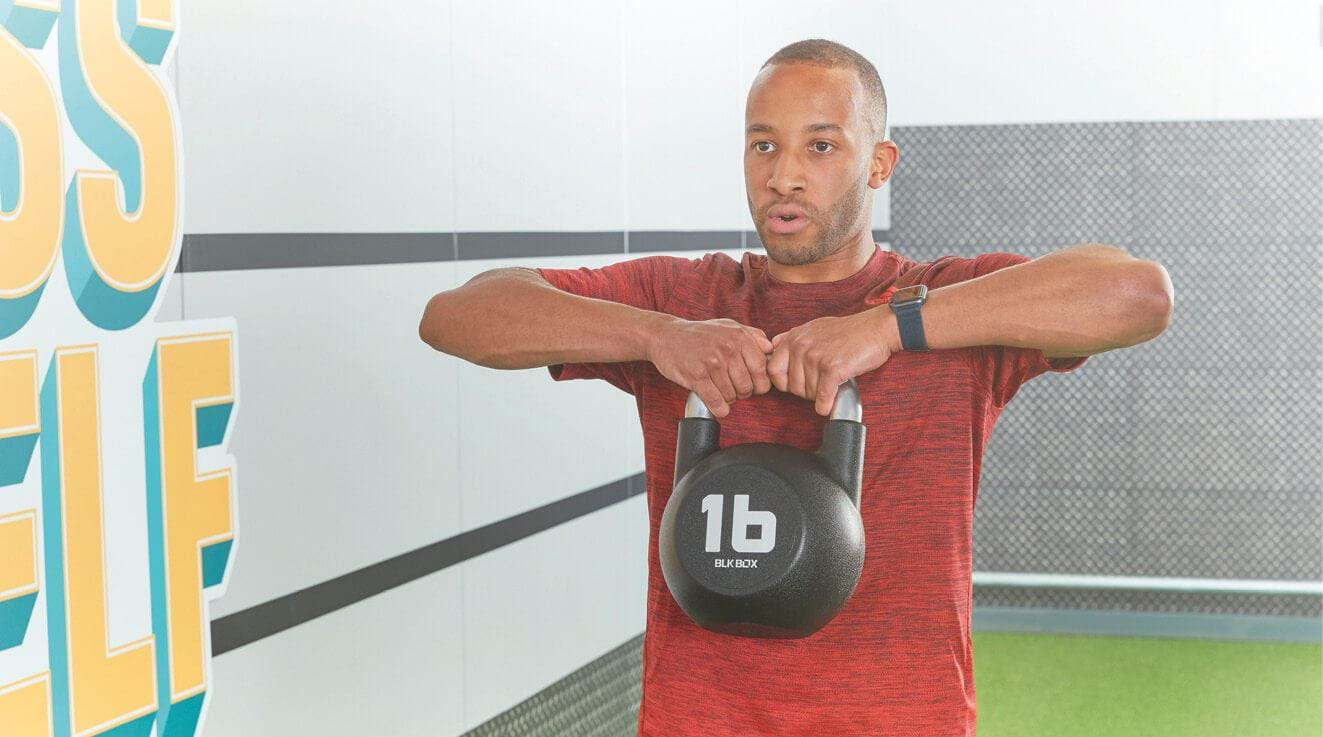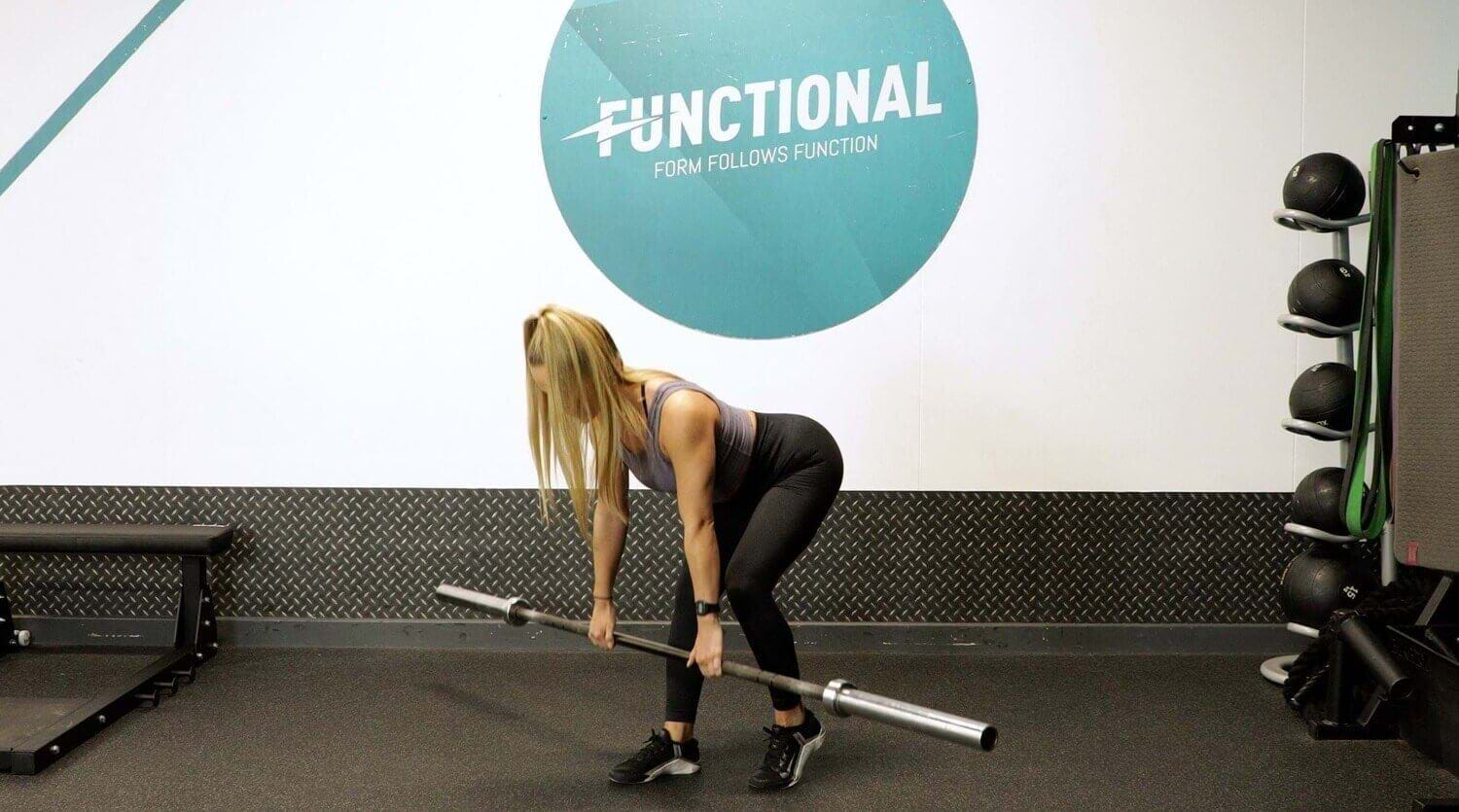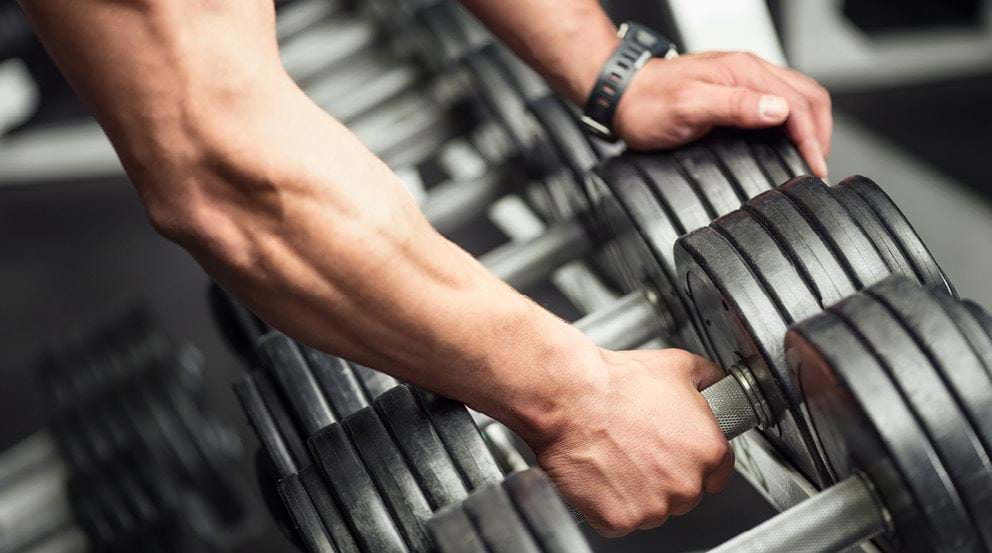Why And How To Do HIIT Kettlebell Workouts

What Is A Kettlebell Workout | Benefits | Exercises | Workout | Tips | Common Mistakes | FAQs
Looking for a workout that builds strength and power while burning fat, with minimal gym equipment? While it sounds too good to be true, a HIIT kettlebell workout delivers full body conditioning and functional strength while burning calories in a short space of time.
Read on to learn how HIIT kettlebell training works, the best exercises to do, and how to structure a HIIT kettlebell workout.
How Does a HIIT Kettlebell Workout Work?
HIIT workouts combine periods of high intensity exercise intervals with periods of recovery. This combination of intensity and intervals helps you get an effective workout in as little as 10 minutes, and HIIT workouts are famous for providing an effective workout in a short space of time. You can learn more about HIIT workouts and the benefits here.
HIIT workouts can be done with different gym equipment, but kettlebells have lots of benefits. Kettlebells are functional, versatile, and allow you to design an entire workout around just one piece of kit.
Many kettlebell exercises naturally work great as part of a HIIT workout thanks to their dynamic nature. The combination of strength and cardio means you're training multiple fitness components, and the intensity means you'll raise your heart rate for maximum calorie burn.
What Are the Benefits of Using Kettlebells for HIIT?
Whether you want to build strength, improve cardiovascular fitness, or burn fat, HIIT kettlebell training delivers results:
Cardio fitness and strength in one workout
Instead of splitting your cardio and strength training into separate workouts, a high intensity kettlebell workout allows you to do both in under 30 minutes.
While HIIT workouts are often doing without weights, using kettlebells enables you to load the muscles to build strength while working the cardiovascular system. It’s an incredibly time efficient way to improve your overall fitness.
Core stability and functional movement patterns
Kettlebell exercises are dynamic, full-body movements that engage your core, helping to build a strong foundation that supports other training and everyday activities.
Balance, coordination, and athletic performance
The functional nature of kettlebell movements improves your body awareness and control, full body coordination, and power, which translates to better performance in other sports and activities.
Time-efficient full-body conditioning
HIIT kettlebell exercises target every major muscle group while working the cardiovascular system, making it one of the best options when you're short on time and want a comprehensive workout.
More muscle engagement than traditional cardio
Doing HIIT with kettlebells involve more muscles than traditional cardio, leading to better overall strength and conditioning.
Which Kettlebell Exercises Are Best for HIIT ?
With so many kettlebell exercises to choose from, it can be hard to know which are the best ones for your HIIT workout. Opting for compound movements that work multiple muscle groups is best for kettlebell HIIT workouts as they are more efficient at building strength and burning calories, meaning you can get an effective full body workout in just a few exercises.
Here are some of our favourites you can try:
Kettlebell swings: the cornerstone of kettlebell training, this movement builds explosive hip power and strengthens your posterior chain whilst getting your heart rate up.
Goblet squats: great for lower body strength and mobility, this exercise helps perfect your squat form whilst building strong legs and glutes.
Deadlifts: Deadlifts build lower body strength and engage the entire posterior chain.
Farmer's carries: functional exercise that engages every muscle group in the body while improving core strength and balance.
Kettlebell clean and jerk: builds speed, power, and upper body and core strength.
Front rack carries: improves strength and stability in the core and shoulders, as well as grip strength.
Alternating bent over rows: targets back and core muscles whilst improving unilateral strength to address any strength imbalances between sides.
Example HIIT Kettlebell Workout Plan
Don't fancy putting together your own kettlebell HIIT workout? Give this one a try! It's a 10 minute kettlebell HIIT workout that is suitable for all levels, and can be doubled or tripled to create a 20 or 30 minute kettlebell HIIT workout.
Warm up
30 seconds arm swings each side
30 seconds leg swings each side
30 seconds marching or jogging on the spot
30 seconds jumping jacks
30 seconds jump squats
30 seconds burpees or walkouts
Workout
This workout follows a 40/20 format, so you'll do 40 seconds of exercise followed by 20 seconds of complete rest. Make sure you're aiming for around 8-9/10 intensity during the workout intervals.
This is a 10-minute workout which can be performed 1-3 times depending on your fitness level, energy, and time.
- Kettlebell swings
Stand with feet shoulder width apart holding a kettlebell in both hands, keeping arms relaxed and shoulders down. Engage your core and hinge at the hips while swinging the kettlebell back behind your legs. Drive your hips forward to swing the kettlebell forward to chest height, squeezing your glutes as you come to standing. Allow the kettlebell to swing back by hinging at the hips and repeat.
- Kettlebell lunges
Stand with feet hip width apart holding a single kettlebell in both hands at chest height, or one in each hand by your side. Step your leg left forward and bend both knees until they are at a 90 degree angle, with torso slightly forward and knees and ankles aligned. Push through the front heel back to standing and repeat on the other side.
- Clean and jerk
Stand with feet shoulder width apart with a kettlebell on the floor between your feet. Hinge forward at the hips and grab the kettlebell with one hand, then drive through your hips to lift the kettlebell while keeping the kettlebell close to your body. As it reaches shoulder height, flip your wrist to catch the kettlebell in a rack position. Bend your knees and press the kettlebell overhead. Lower the kettlebell back to the floor by reversing the movement and repeat on the other side.
- Goblet squats
Stand with feet slightly wider than hip width apart, holding the kettlebell in both hands in front of your chest. Sink your hips back and down as if sitting on a chair, stopping when your thighs are parallel with the floor. Pause before driving through the heels back up to standing.
- Alternating bent over rows
Stand with feet hip width apart holding a kettlebell in each hand with arms extended by your side. Hinge at the hips to bring your torso at a 45 degree angle to your thighs. Brace your core and pull one elbow back and behind your torso while keeping the other arm extended. Return your arm back down and repeat on the other side.
- Perform this circuit twice
5 Tips to Keep HIIT Kettlebell Workout Safe and Effective
HIIT kettlebell exercises are suitable for all levels but it's important to perform these exercises correctly to avoid injury and maximise effectiveness:
Master proper form before increasing speed or putting any combination of exercises together. Spend time learning the movements with a light kettlebell before progressing to more challenging weights or picking up the pace.
Choose an appropriate kettlebell weight for your fitness level. You should be able to maintain good form throughout your working sets. If you're new to HIIT kettlebell training, start light and choose heavier kettlebells as you get stronger.
Maintain control during fast movements. Some kettlebell movements use momentum, but it's important to maintain control by bracing your core and staying in control of the movements.
Keep rest periods strict to maintain the HIIT effect. Use a timer to ensure you're sticking to the work/rest intervals. This helps maintain the intensity that is the cornerstone of high intensity interval training.
Listen to your body. HIIT sessions are meant to be challenging, so listen to your body and reduce the weight or number of intervals if necessary. It's better to modify the workout than risk injury.
Common Mistakes to Avoid During a Kettlebell Workout
Using momentum without muscle control: brace your core, lats, and glutes to maintain control over the moving kettlebell rather than using speed and momentum to move the weight.
Neglecting your core: your abs and core are the power centre for kettlebell movements. Maintain core engagement to protect your back and improve explosive power.
Choosing the wrong weight of kettlebell: PureGym kettlebell areas have a large selection of weights to choose from. Start light before moving up to a slightly heavier kettlebell.
Speed at the expense of form: although HIIT workouts need to be fast, quality technique is always important. Poor form increases risk of injury and makes your workout less effective.
Skipping the warm-up: proper preparation is crucial for kettlebell training. Include mobility work and movement prep specific to the exercises.
FAQs About HIIT Kettlebell Training
Start with 2-3 sessions per week, allowing at least one day of recovery between workouts.
For beginners, women might start with 8-12kg, men might begin with 12-16kg. Focus on form with a light kettlebell before moving to heavier weights.
Yes, but start with basic movements and lighter weights, focusing on proper form before increasing intensity.
A typical session lasts 10-30 minutes, not including warm-up and cool-down.
Some muscle soreness is normal, especially when starting out, but it shouldn’t be painful or last for more than a few days.
Ready to give HIIT kettlebell training a go? Speak to one of our Personal Trainers who can show you proper form and help you get started safely. Find a PureGym near you to get started on your kettlebell journey.


